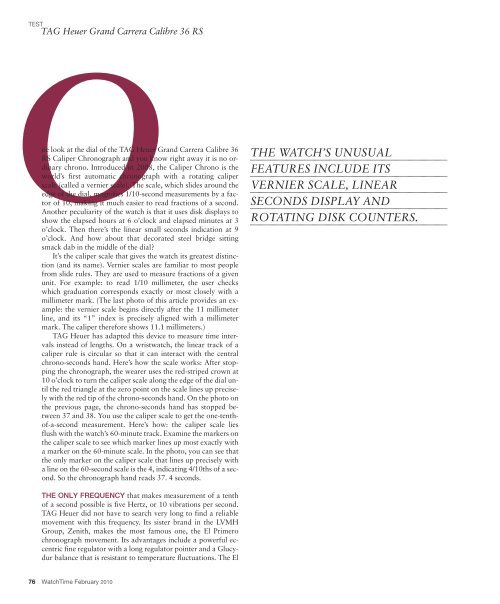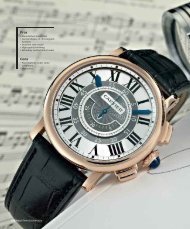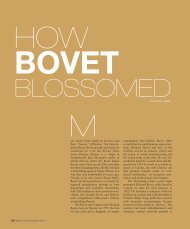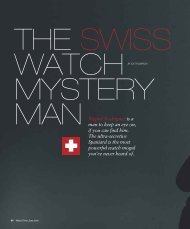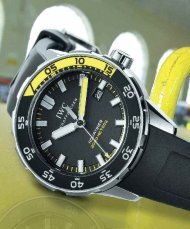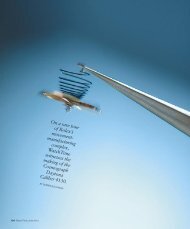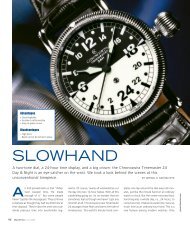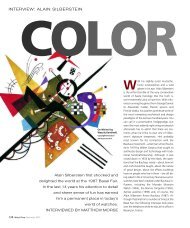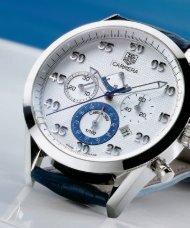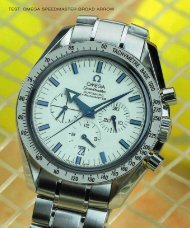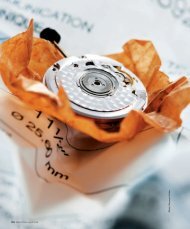WT_2010_01: TEST: TAG HEUER GRAND CARRERA CALIBRE 36 ...
WT_2010_01: TEST: TAG HEUER GRAND CARRERA CALIBRE 36 ...
WT_2010_01: TEST: TAG HEUER GRAND CARRERA CALIBRE 36 ...
You also want an ePaper? Increase the reach of your titles
YUMPU automatically turns print PDFs into web optimized ePapers that Google loves.
<strong>TEST</strong><br />
<strong>TAG</strong> Heuer Grand Carrera Calibre <strong>36</strong> RS<br />
O<br />
ne look at the dial of the <strong>TAG</strong> Heuer Grand Carrera Calibre <strong>36</strong><br />
RS Caliper Chronograph and you know right away it is no ordinary<br />
chrono. Introduced in 2008, the Caliper Chrono is the<br />
world’s first automatic chronograph with a rotating caliper<br />
scale (called a vernier scale). The scale, which slides around the<br />
edge of the dial, magnifies 1/10-second measurements by a factor<br />
of 10, making it much easier to read fractions of a second.<br />
Another peculiarity of the watch is that it uses disk displays to<br />
show the elapsed hours at 6 o’clock and elapsed minutes at 3<br />
o’clock. Then there’s the linear small seconds indication at 9<br />
o’clock. And how about that decorated steel bridge sitting<br />
smack dab in the middle of the dial?<br />
It’s the caliper scale that gives the watch its greatest distinction<br />
(and its name). Vernier scales are familiar to most people<br />
from slide rules. They are used to measure fractions of a given<br />
unit. For example: to read 1/10 millimeter, the user checks<br />
which graduation corresponds exactly or most closely with a<br />
millimeter mark. (The last photo of this article provides an example:<br />
the vernier scale begins directly after the 11 millimeter<br />
line, and its “1” index is precisely aligned with a millimeter<br />
mark. The caliper therefore shows 11.1 millimeters.)<br />
<strong>TAG</strong> Heuer has adapted this device to measure time intervals<br />
instead of lengths. On a wristwatch, the linear track of a<br />
caliper rule is circular so that it can interact with the central<br />
chrono-seconds hand. Here’s how the scale works: After stopping<br />
the chronograph, the wearer uses the red-striped crown at<br />
10 o’clock to turn the caliper scale along the edge of the dial until<br />
the red triangle at the zero point on the scale lines up precisely<br />
with the red tip of the chrono-seconds hand. On the photo on<br />
the previous page, the chrono-seconds hand has stopped between<br />
37 and 38. You use the caliper scale to get the one-tenthof-a-second<br />
measurement. Here’s how: the caliper scale lies<br />
flush with the watch’s 60-minute track. Examine the markers on<br />
the caliper scale to see which marker lines up most exactly with<br />
a marker on the 60-minute scale. In the photo, you can see that<br />
the only marker on the caliper scale that lines up precisely with<br />
a line on the 60-second scale is the 4, indicating 4/10ths of a second.<br />
So the chronograph hand reads 37. 4 seconds.<br />
THE ONLY FREQUENCY that makes measurement of a tenth<br />
of a second possible is five Hertz, or 10 vibrations per second.<br />
<strong>TAG</strong> Heuer did not have to search very long to find a reliable<br />
movement with this frequency. Its sister brand in the LVMH<br />
Group, Zenith, makes the most famous one, the El Primero<br />
chronograph movement. Its advantages include a powerful eccentric<br />
fine regulator with a long regulator pointer and a Glucydur<br />
balance that is resistant to temperature fluctuations. The El<br />
76 WatchTime February <strong>2<strong>01</strong>0</strong><br />
THE WATCH’S UNUSUAL<br />
FEATURES INCLUDE ITS<br />
VERNIER SCALE, LINEAR<br />
SECONDS DISPLAY AND<br />
ROTATING DISK COUNTERS.


